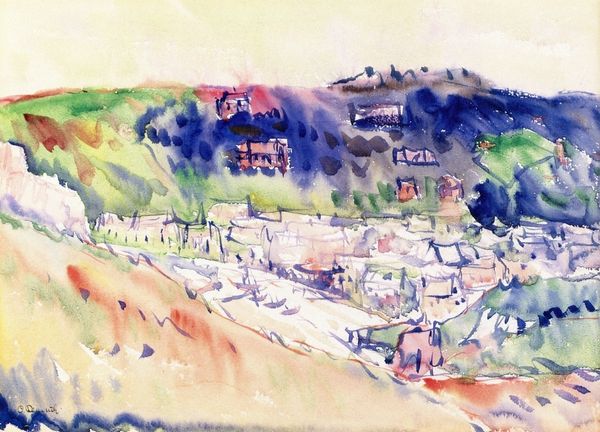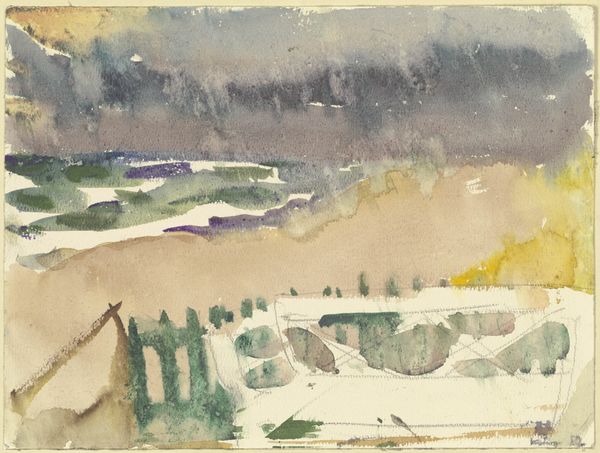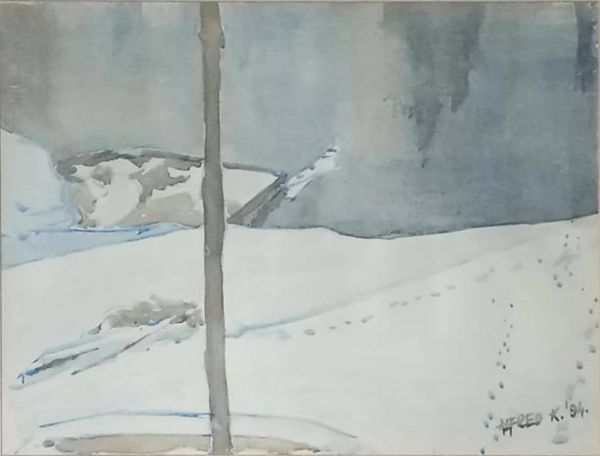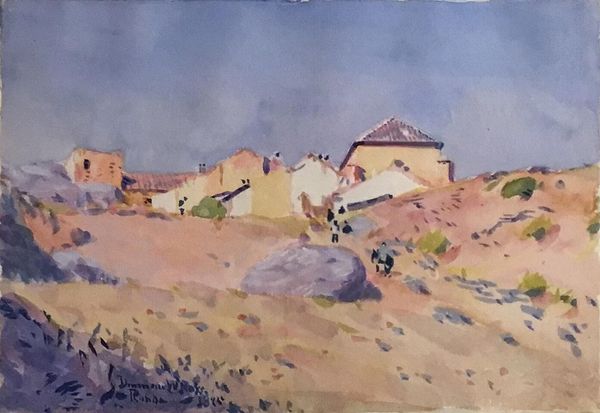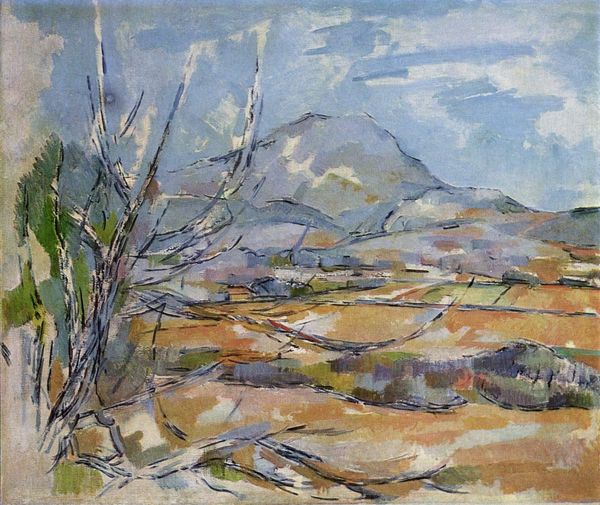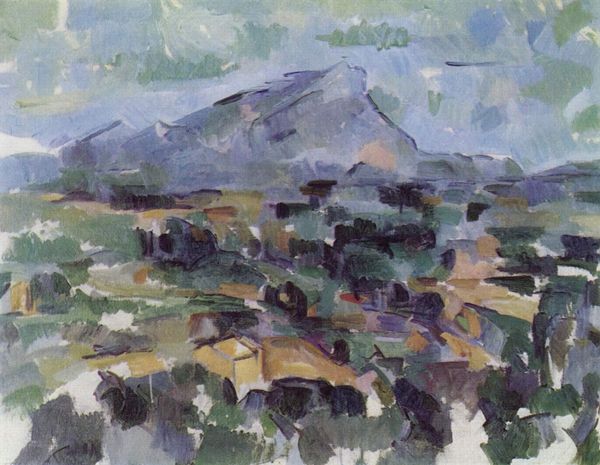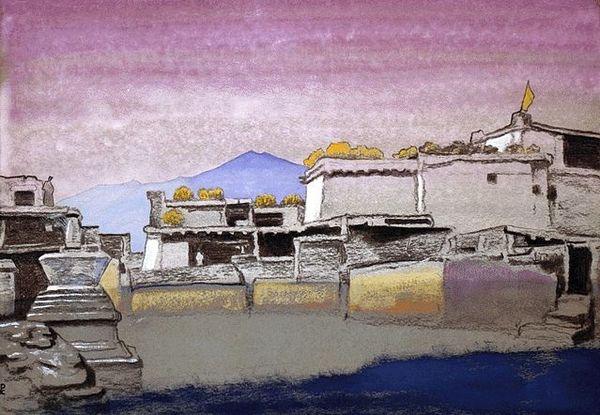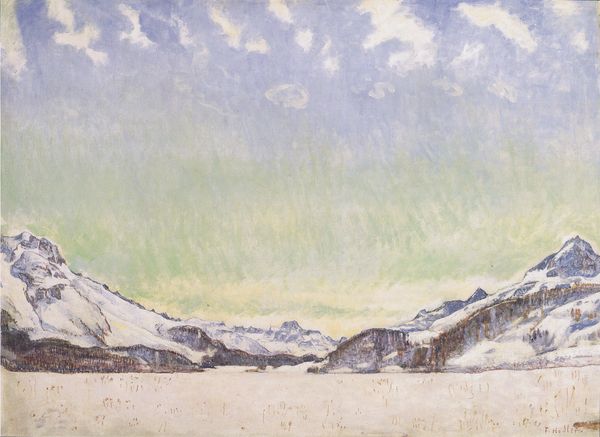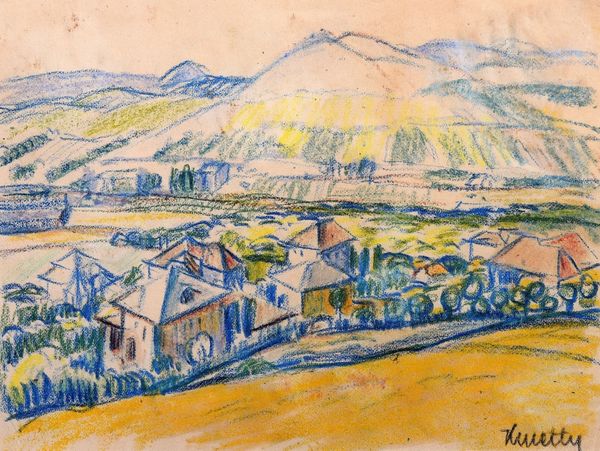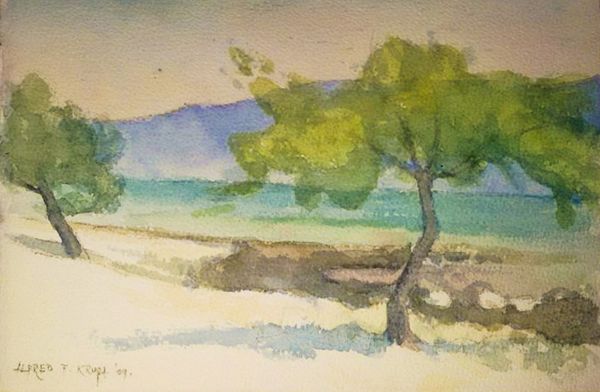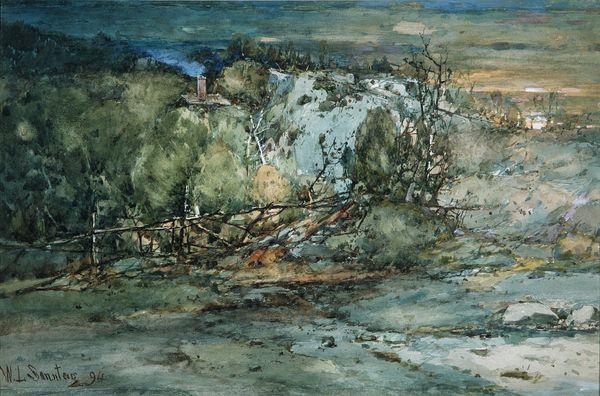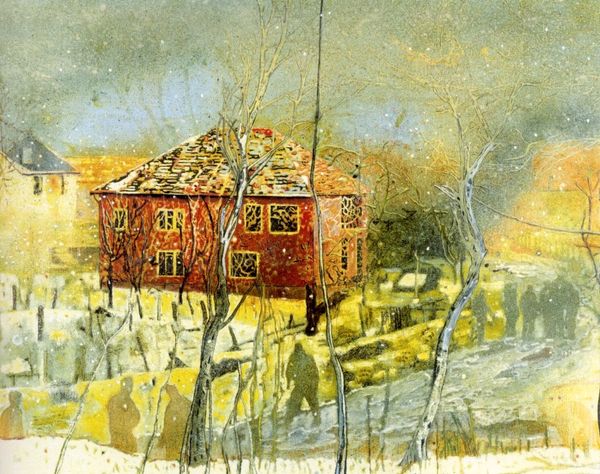
painting, watercolor
#
painting
#
impressionist painting style
#
landscape
#
winter
#
impressionist landscape
#
oil painting
#
watercolor
#
watercolor
#
realism
Copyright: Public domain
Curator: Robert Henri painted "Santa Fe Adobes" in 1922. He renders the buildings in watercolor and we see snow covering the foreground. Editor: It feels muted, almost ghostly, the stark whites and grays blending the buildings into the winter landscape. A sort of visual erasure, perhaps. Curator: Henri's artistic practice involved actively engaging with social issues, often critiquing class structures through his portraits of everyday people. How do we interpret this landscape within that context, or maybe in opposition to it? Is it possible this reflects on class and power structures too? Editor: Landscape can be just as revealing. I’m struck by the fence or barrier bisecting the scene, its crude construction almost violently interrupting the placid adobes beyond. Fences dictate property, division. They always reflect who is in and out, what kind of control is at stake, which of course touches on access, power and privilege. Curator: Considering the historical moment, there’s an influx of artists heading to New Mexico. How might this work respond to or perpetuate colonial narratives of the American West, shaping cultural perceptions of place and people? How much do these winter tones erase, homogenize the reality of this location? Editor: Exactly. We're viewing not just a landscape but a representation, shaped by Henri’s gaze and the art market's demands. His East Coast Impressionism inevitably clashes or interacts with this landscape. Curator: Indeed. Perhaps thinking about his peers who also travelled west – think Georgia O'Keeffe – might contextualize Henri's relationship to Santa Fe in the early 20th century. How does this fit or subvert other myth-making portrayals of the West? Editor: It prompts reflection on artistic freedom, representation, and the socio-political undercurrents subtly shaping these landscapes. I find my own assumptions and the implications of a painter moving through and capturing what he perceives. Curator: I think it’s vital to always ask ourselves, ‘Who has the power to represent, and how is that power expressed through their work? What’s included or excluded?' Editor: And ultimately, how does that affect the way we see the place ourselves today. Thank you.
Comments
No comments
Be the first to comment and join the conversation on the ultimate creative platform.
